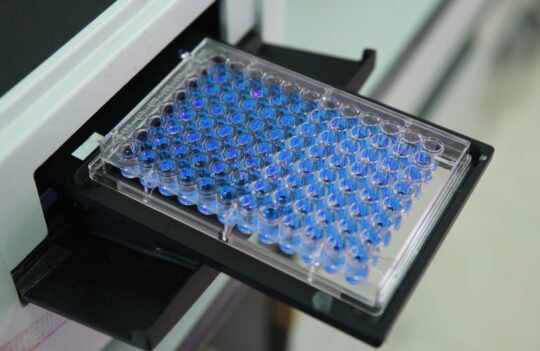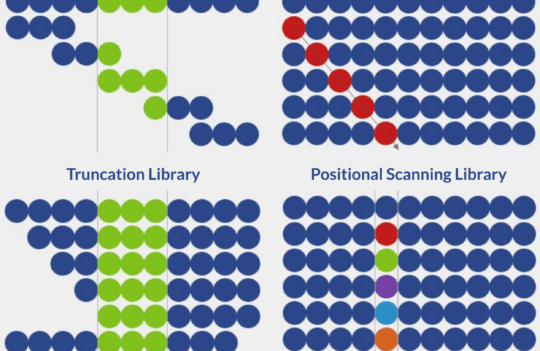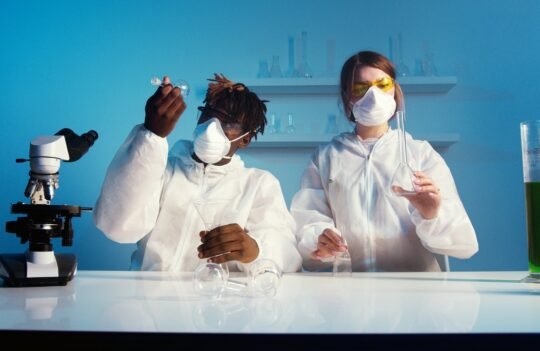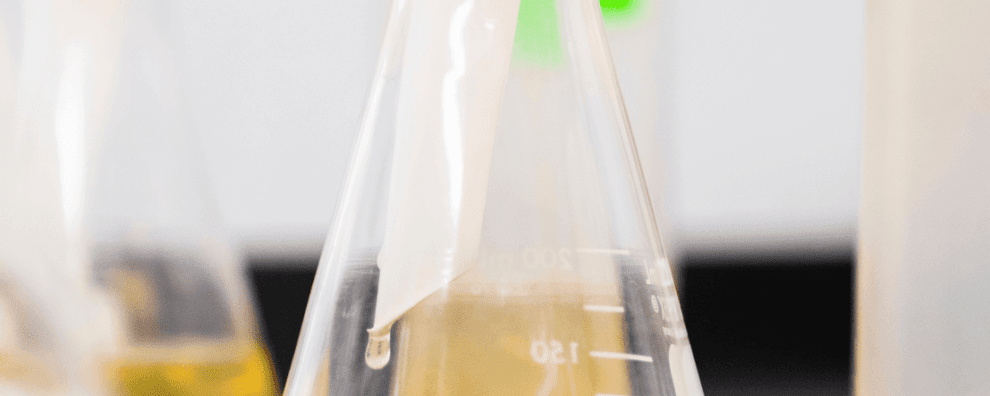 Peptide synthesis
Peptide synthesis
Do you need to consider developing a GMP peptide for your project?
GMP peptide synthesis regulations ensure the safety of the final product for end-user applications. Currently, the greatest challenge encountered during large-scale production is the purification of the peptide. However, this challenge can be addressed by optimizing the production processes to reduce the amount and complexity of impurities in the final product. Interestingly, the optimization of the peptide production process can often be achieved by combining chemical, enzymatic and recombinant processes.
Non-GMP and GMP peptides: know the differences
GMP stands for Good Manufacturing Practices. They comprise a list of strict regulatory guidelines that are critical for the development and production of high-quality peptides.
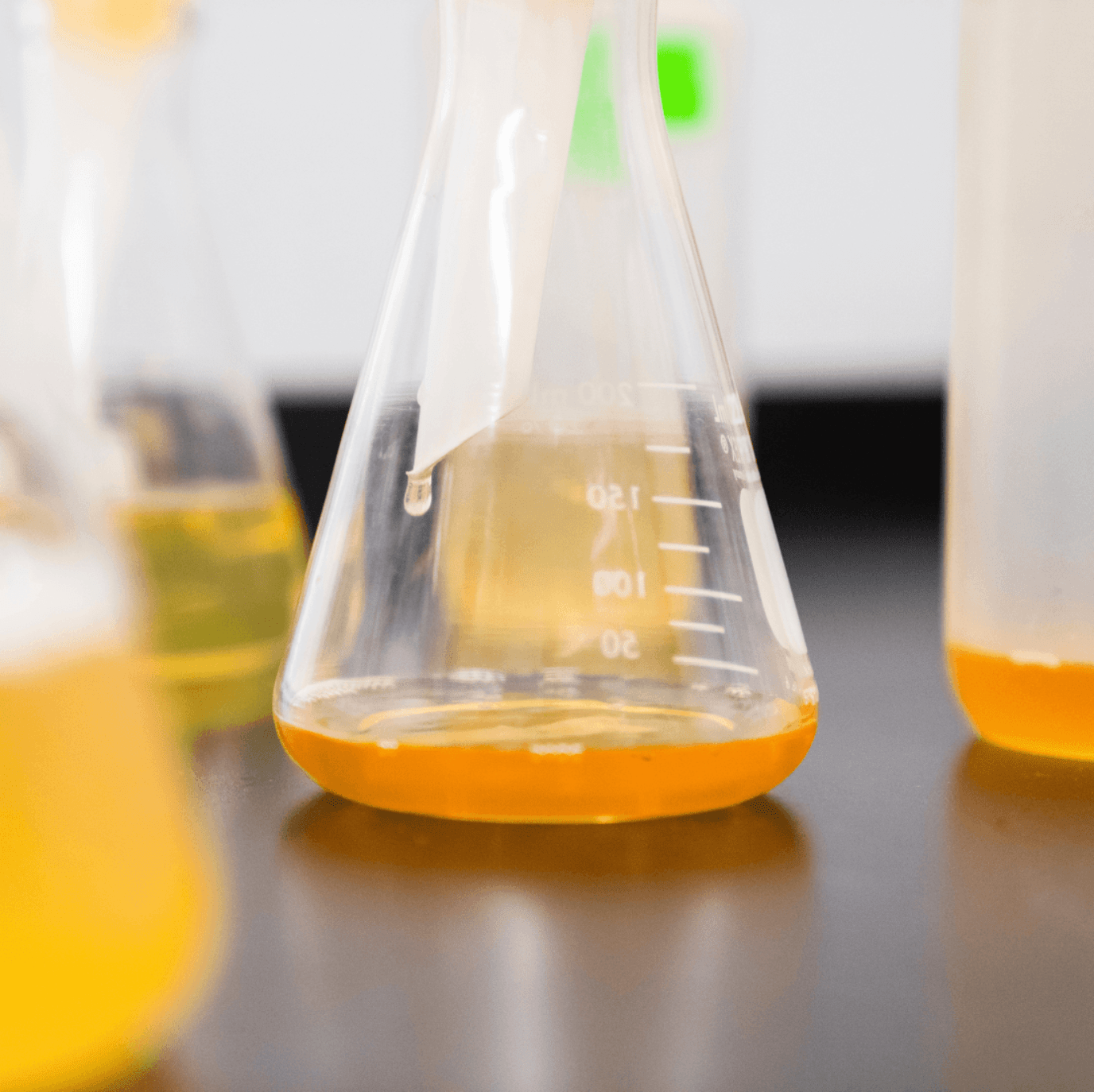
The main purpose of these guidelines is to guarantee these peptides are safe for the final user. They do this by setting high standards of quality, identity, and purity. For this reason, GMP peptides are produced and purified to be integrated into the following products:
- In vitro diagnostics
- Therapeutic drugs (e.g. cell-penetrating peptides)
- Cosmetics (link to the article)
- Food supplies
Conversely, when research and analytics are the intended uses for a peptide, these do not need to be manufactured according to GMP regulations.
Common processes for GMP peptide synthesis
The production of GMP peptides starts with the evaluation of different production processes. At this point, the better the yield and purity of the peptide after production, the lesser the need for complex and labor-intensive purification techniques and the lower become the overall costs production.
Currently, there are four technologies available for the production of GMP peptides:
- Solid-phase synthesis
- Liquid-phase synthesis
- Enzymatic synthesis
- Recombinant production
All of these technologies present different challenges and limitations. Moreover, with the increasing importance of long peptides for different applications, its large-scale production is also becoming increasingly complex.
Solid-phase peptide synthesis has dominated the market of non-GMP and GMP peptide synthesis in the last decades.
This mature technology, discovered in the 1950s, continues to present many advantages in terms of ease of scalability, full automation, and short production cycles.
On the downside, its use of strong solvents and high incidence of side reactions can often generate many impurities that make the purification process increasingly challenging.
For this reason, some companies specialized in GMP peptide synthesis often consider the use of alternative methods. One such method is the classical approach: liquid-phase peptide synthesis.
Historically, liquid-phase synthesis may have lost much of its initial value, but, for especially challenging small peptides, this classical and time-consuming approach can sometimes be beneficial.
During liquid-phase synthesis, the product is purified after each step. In this way, side reactions can be detected and corrected prematurely and the purity of the final product tends to be higher than solid-phase technologies.
This process is slower and more limited than it’s solid-phase counterpart, but it could be ideal for the synthesis of small and hard-to-purify peptides.
Chemical synthesis methods are the most mature technologies ever designed for peptide synthesis. However, increasingly, researchers are making an active effort to develop biocatalytic methods (enzymes) and recombinant production methods. This renewed interest in these biotechnologies have been fueled by the will to reduce the environmental burden of peptide synthesis.
Recombinant production has been heavily developed for the production of complex proteins and it can currently be considered a mature technology. Unfortunately, these processes are not suited for the synthesis of highly hydrophobic peptides (as inclusion bodies are hard to purify) and they cannot be used for the production of peptides containing unnatural or modified amino acid residues. Similarly, enzymatic synthesis technologies still present many limitations including high developmental cost. However, in the future, these technologies may serve as a suitable alternative due to their lower environmental burden.
Due to the increased complexity of GMP peptides, manufacturers will likely consider using a combination of chemical, enzymatic and recombinant production methods. Since peptide fragments can be posteriorly fused by chemical conjugation, a combination of these methods may allow researchers and manufacturers to obtain high purity peptides with limited need for further purification.
| Solid-phase synthesis | Liquid-phase synthesis | Enzymatic synthesis | Recombinant production | |
|---|---|---|---|---|
| Advantages | Quick synthesis of long peptides
Automatable and scalable Short production times High yields |
Less expensive
High purity of the final product |
High selectivity and specificity (reduction of isomers)
Lower environmental burden Higher yields |
Allows the synthesis of peptides with secondary and tertiary structure
High yields Lower environmental burden |
| Limitations | Expensive raw materials
High probably of generating impurities |
Restricted for the production of very short peptides
Time consuming and labor intensive Low yields |
Expensive developmental and operational costs
Low yields Restricted to the synthesis of hydrophilic peptides Difficulties in controlling the final sequence Difficulties in the synthesis of long peptides |
Limited yield for strongly hydrophobic peptides (inclusion bodies)
High developmental cost Cannot be used to include modified aa |
| Uses | Peptides 10-40 aa
Peptides with modification Limited secondary or tertiary structure |
Peptides <10 aa
Peptides with modification Limited secondary or tertiary structure |
Peptides <10 aa
Possibility to use unnatural aa |
Complex peptides with secondary and tertiary structure
Peptides with only natural aa and with > 10 residues |
Peptide purification
Chemical peptide synthesis is fully optimized for large-scale production. But often even a fully optimized solid-phase peptide synthesis process will generate final products with truncated or deleted sequences, isomers or other by-products.
The best possible approach to meet the required regulations for GMP peptides starts by evaluating the impurity profile during the optimization of the production process. In some cases, it may even be desirable to obtain a slightly lower production yield if significantly higher purities can be achieved.
This evaluation can be monitored with chromatographic methods and bioactivity tests. And it should precede the large-scale production of the peptide of interest.
This optimization is a crucial step in peptide manufacture since purification is often considered the most difficult step of GMP-grade synthesis. Typical purification techniques used for large-scale production include:
- Size-exclusion chromatography
- Ion exchange chromatography
- Partition chromatography
- Reverse-phase high-performance liquid chromatography
Concluding remarks
Peptides are recurrently integrated into therapy, diagnostics, cosmetics, and food supplies. Since these products are recurrently consumed by end-users, it is crucial to continue to devise new strategies to ensure that the large-scale production of highly pure and safe GMP peptides.
Many researchers and manufacturers agree that compliance with GMP regulatory standards starts with the careful design of the production process. Presently, GMP peptides can be produced by chemical synthesis (solid-phase and liquid-phase), enzymatic and recombinant processes.
These processes all have different advantages and limitations, thus, researchers and manufacturers are increasingly focused on developing combined approaches for GMP peptide synthesis.
- Guzmán, F. et al. Peptide synthesis: chemical or enzymatic. Electronic Journal of Biotechnology. 2007; 10(2):279-314. doi: 10.2225/vol10-issue2-fulltext-13
- Pritz, S. et al. Synthesis of protein mimics with nonlinear backbone topology by a combined recombinant, enzymatic, and chemical synthesis strategy. Angew Chem Int Ed Engl. 2008; 47(19):3642-3645. doi: 10.1002/anie.200705718
- Yazawa, K. and Numata, K. Recent Advances in Chemoenzymatic Peptide Syntheses. Molecules 2014, 19, 13755-13774; doi:10.3390/molecules190913755

